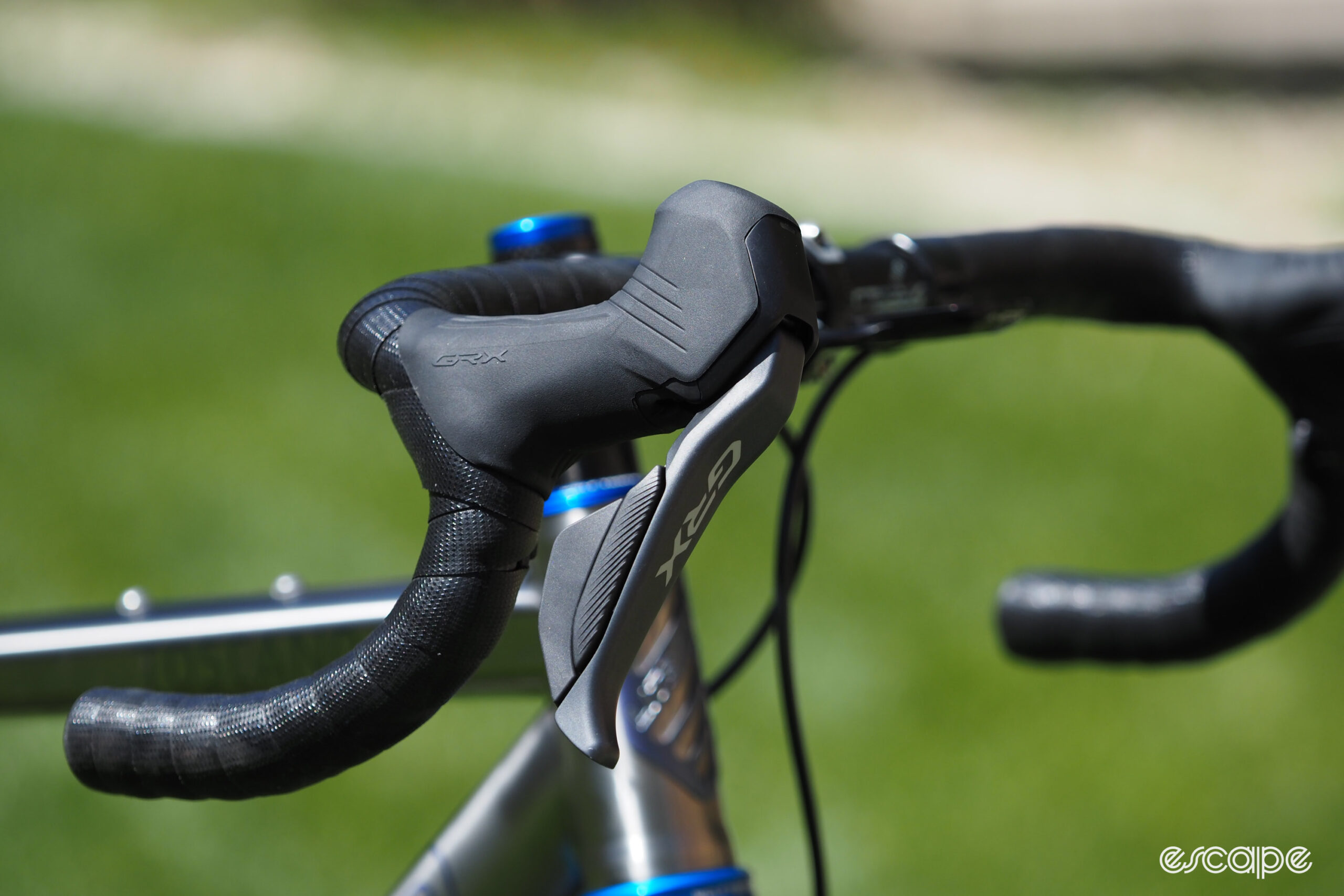Shimano has today announced the much-anticipated redesign of its GRX Di2 electronic gravel groupset. The new version – dubbed RX825 – incorporates many of the changes people have been expecting, such as a 12-speed cassette and the semi-wireless layout already used by the company’s latest electronic road groupsets. The ergonomics are also outstanding, the total available gearing range is excellent, the shifting performance is best-in-class, and Shimano has even managed to keep the weight and pricing in check, with minimal changes from the original version.
But yet the thing that so many people were hoping to see – a wide-range 1x configuration – is nowhere to be seen. As good as GRX Di2 RX825 is, does that one thing unfortunately overshadow everything else?
Going wiredless
GRX Di2 RX825 follows in the footsteps of Shimano’s other new Di2 electronic groupsets in that it moves to a semi-wireless (or “wiredless” as an old friend used to say) format in place of the fully wired setup of the previous version. Each shifter is physically independent with its own transmitter, and Shimano says the two CR1632 coin cell batteries that power each one should be good for roughly four years of use. At the other end, the front and rear derailleurs are connected by Shimano’s small-format SD300 wires, both powered by a single battery that resides inside the frame. There’s also an option to configure GRX Di2 RX825 as a fully wired setup for riders who have more extreme concerns for run time and/or reliability.

Why not go with independent batteries like SRAM AXS? According to Shimano, the BT-DN300 battery has a larger capacity (500 mAh vs. 300 mAh) for roughly 1,000 km of use per charge, and since it’s hidden away inside the frame, it’s better protected from the elements and from potential impact. Granted, one could easily make the argument that it’s also nice to be able to carry a spare battery, but that’s a debate for another day (and largely down to personal preferences, anyway).
Aside from the newly wireless format, the levers themselves see smaller changes in terms of ergonomics and functionality. The overall shape is nearly identical to the RX815 generation, with the same slim-format body, small-radius hook and low-profile peak, and rubberized aluminum brake lever blades that feature a modified pivot position for more leverage than their mechanical cousins. The shift paddles themselves are much like the previous-generation GRX Di2 and the much-loved auxiliary buttons up top thankfully remain, with the function of each button user-selectable via Shimano’s e-Tube smartphone app. Shimano says the new levers are also optimized for flared bars, although that aspect seems somewhat subtle.
In terms of what your hands feel, the updates are mostly a matter of changes in texture. The rubber hoods again feature raised ribs to help you maintain a secure grip in muddy conditions, but they’re a bit less pronounced than before, which should be easier on your hands if you don’t wear gloves. The molded-in texture on the outboard shift paddle is now an array of parallel lines instead of the cross-hatch pattern used on RX815. And up top, the auxiliary buttons sit a bit more proud off the surrounding surface, presumably to make them easier to locate by feel.
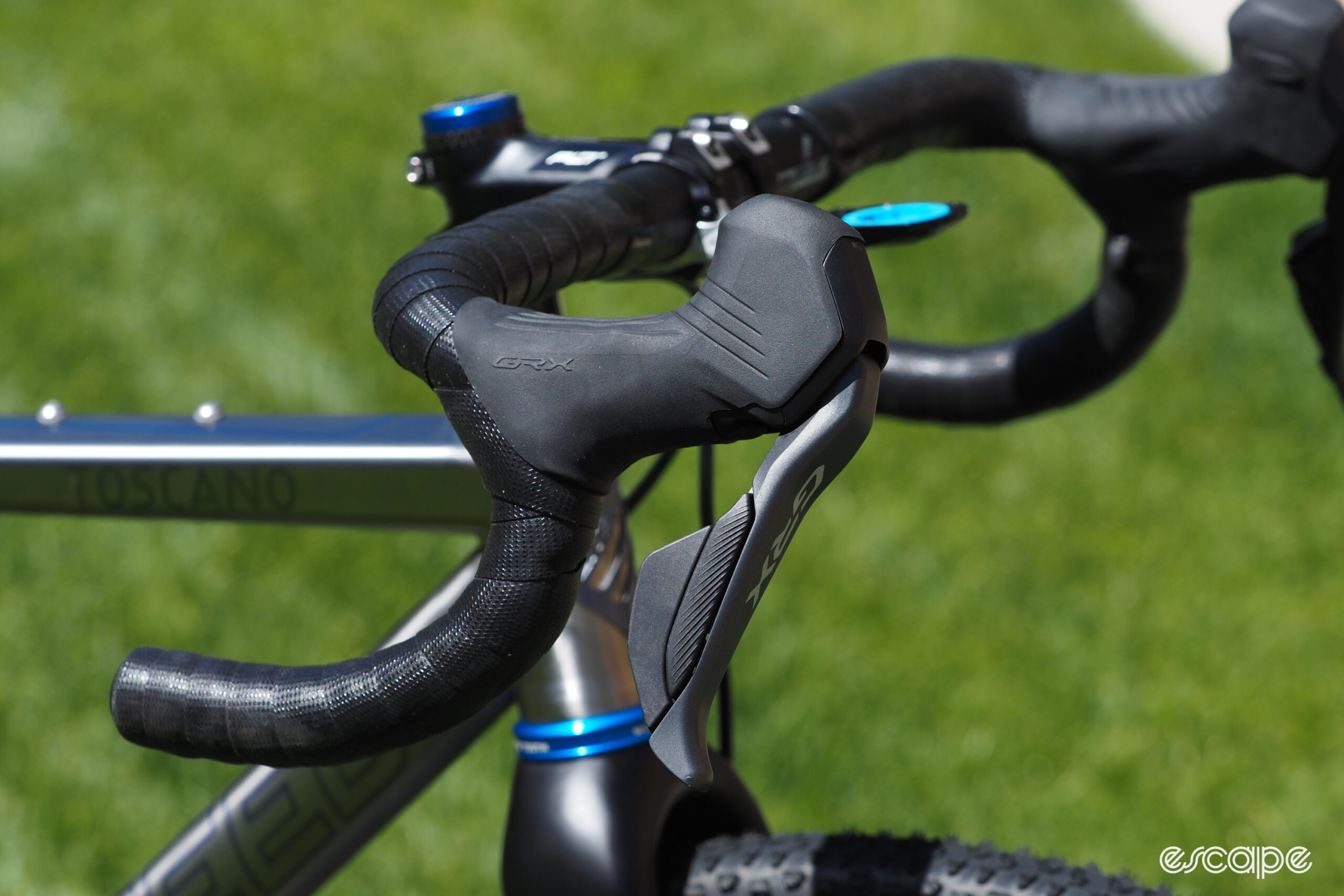
As on Shimano’s 12-speed wiredless road stuff, an integrated LED offers a quick view on remaining battery life, and also offers a nice visual cue for stuff like programming updates.
Out back, the new GRX Di2 rear derailleur sports the same basic layout as before, although where on the previous generation there were two different cage lengths, there’s now just one (more on that in a bit). The updated geometry now accommodates a 36T large sprocket and has a total capacity (the sum total between the largest and smallest sprockets, and the inner and outer chainring) of 40T – increases of 2T for both relative to GRX Di2 RX815. The aesthetics have also been tidied up for a sleeker and more grown-up appearance than before (at least to my eye).
Despite the extra capacity and the added wireless hardware and magnetic charging port (the same as is used on other current-gen Shimano Di2 groupsets and power meters), the new rear derailleur isn’t noticeably bigger or bulkier than its forebear – and in fact, it’s even slightly lighter than it used to be. Naturally, Shimano’s low-profile Shadow Plus layout carries over, which keeps most of the important bits tucked further inboard to help minimize crash damage, and there’s the usual pulley cage clutch with the same on/off toggle switch and user-serviceable (and adjustable) design as before.
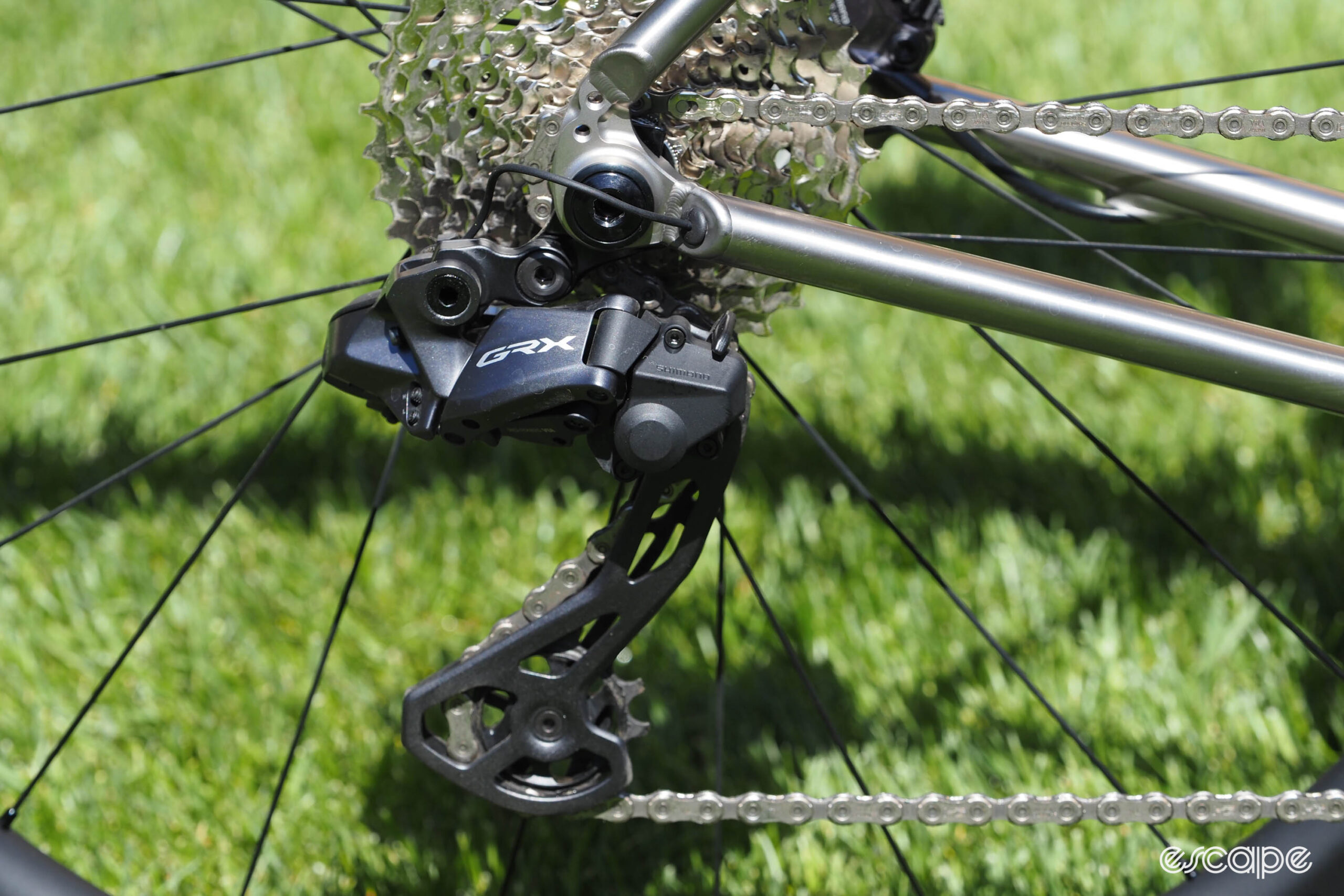
Visual changes to the front derailleur are similarly minor, although the changes to the steel cage are more significant. The front derailleur accommodates the same 17-tooth maximum spread between the inner and outer chainrings, although curiously, the largest chainring that can officially be used has shrunk from 50T on GRX Di2 RX815 to 48T on the new stuff. Since the cage still incorporates an auto-trim feature depending on where the chain is out back, it’s relatively narrow for speedier and more reliable shifting without having to deal with annoying cage rub.
Sadly, Shimano says there’s essentially zero compatibility between old GRX Di2 components and new, although that shouldn’t be surprising given the new wiredless format and the smaller SD300 wire connectors (although on the upside, the 12-speed road Di2 components are essentially plug-and-play). More disappointing is the fact Shimano has no plans to make old GRX Di2 components compatible with 12-speed at all, despite the fact that it seems like it should be technically feasible through a combination of firmware and modest hardware update.
Also unfortunate is there’s yet to be a factory power meter option for GRX Di2 (or any GRX variant, for that matter), which is particularly troubling given the recent shuttering of Stages Cycling, which previously was one of the largest providers for aftermarket Shimano power meter installations. And for those who are so inclined, there’s also no built-in provision for dropper post controls.
Common core
As with Shimano’s original GRX Di2 RX815 electronic gravel groupset, the new GRX Di2 RX825 shares many of its drivetrain components with its cable-actuated GRX RX820 analog (which was launched just this past August). Included in that list are the new 12-speed cassettes, the double crankset, the hydraulic disc-brake calipers, and the chain (which is itself borrowed from Shimano’s Deore XT mountain bike range).
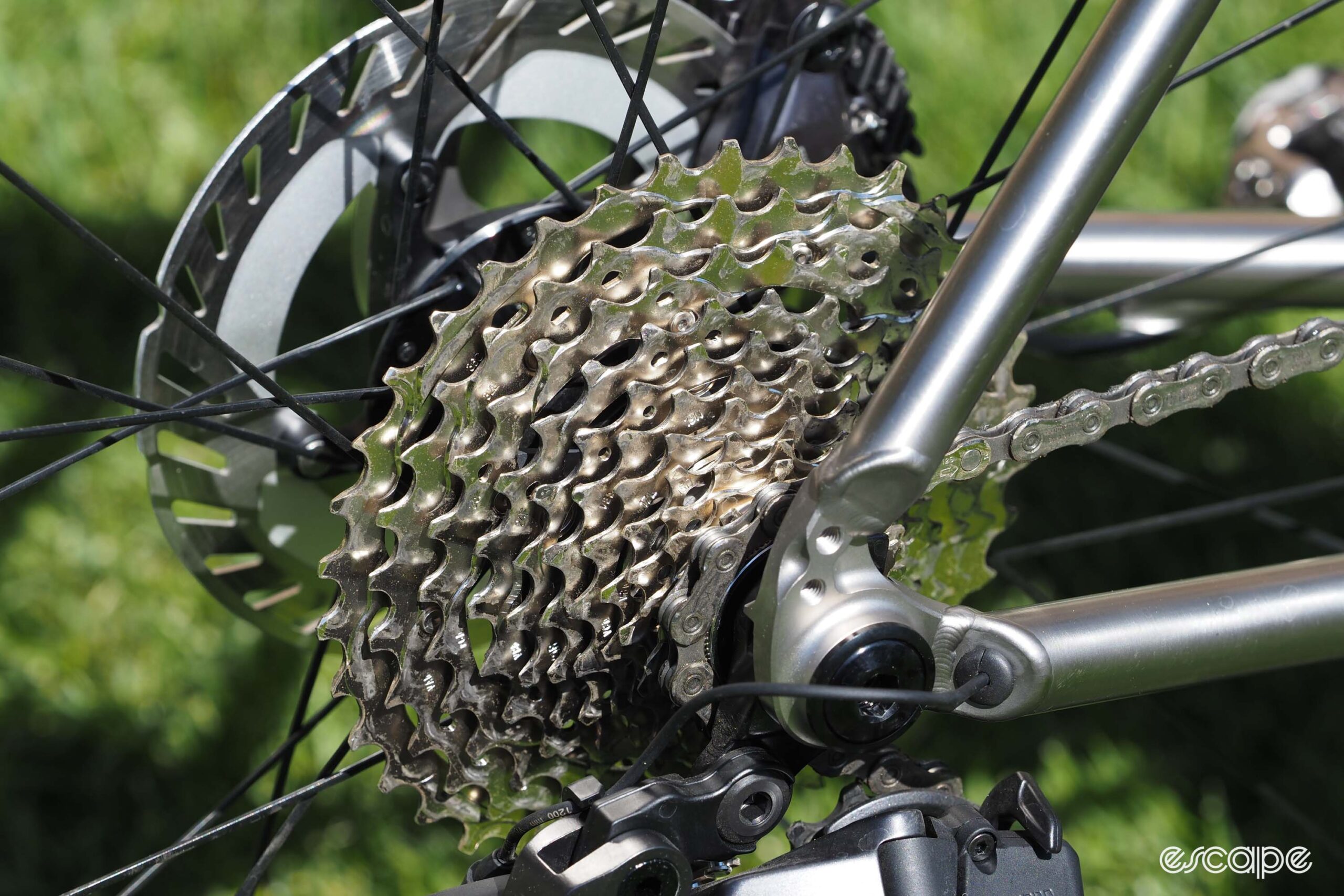
The 12-speed cassettes – originally introduced with the latest Shimano 105 groupset – are offered in either 11-34T or 11-36T size options, with nothing larger currently on tap (and again, maximum official compatible sprocket size on the rear derailleur is 36T). The hollow-forged aluminum crankarms themselves are carried over unchanged from 11-speed GRX, seemingly right down to the finish and graphics, including the asymmetrical four-bolt chainring bolt circle diameter (BCD) and Shimano’s tried-and-true 24 mm Hollowtech steel spindle design. Also carrying over are the same 170, 172.5, and 175 mm crankarm lengths; nothing shorter is available at the moment. The chainrings themselves, however, are spaced for the narrower 12-speed chain, and offered in 48/31T and 46/30T sizes.
As compared to previous-generation GRX, the new GRX820 hydraulic disc-brake calipers are said to offer slightly (10%) more piston retraction to help reduce rotor rub and ease initial setup, and updated fittings make it a little easier to cleanly bleed the system without getting fluid everywhere. And speaking of which, just in case you’re wondering, Shimano is sticking with its preferred mineral oil format instead of DOT fluid.
Individual component weights and prices are as follows (pricing for other regions is still to be confirmed):
| Claimed weight | Change from RX815 | Retail price | |
| ST-RX825 Dual Control levers (complete assembly with disc brake caliper, each) | 415 g | +42 g | US$557 |
| RD-RX825 rear derailleur | 310 g | + 23 g | US$410 |
| FD-RX825 front derailleur (braze-on) | 142 g | +7 g | US$210 |
| FC-RX825 crankset (48/31T, 172.5 mm, w/o BB) | 721 g | +11 g | US$250 |
| CS-HG710-12 cassette (11-36T) | 391 g | n/a | US$88 |
| CN-M8100 chain | 247 g | -10 g | US$49 |
| RT-CL800 rotors (160 mm, each) | 228 g | no change | US$122 |
| BT-DN300 battery | 53 g | +3 g | US$185 |
| SD300 wiring (900+1,300 mm) | 15 g | no change | US$56 |
| Total: | 2,522 g | US$2,606 |
Ride report
I’ve only had a few days of riding on the new GRX Di2 RX825 stuff, although one of those included the conveniently condensed test crucible that was Pete Stetina’s Carson City Paydirt gravel event in Carson City, Nevada with just over 90 km (56.5 mi) of varied and challenging terrain (sorry to disappoint, folks, but I hedged and signed up for the medium course).
As I’ve come to expect from Shimano, shift performance is simply superb. Chain movement from cassette sprocket to sprocket is so silky-smooth at lower power outputs that you’re sometimes not even sure anything has happened, but it’s also very positive and consistent when you’re really mashing the pedals. It’s not quite as happy as SRAM Transmission to be utterly manhandled, but it’s also not far off, either. Regardless, Shimano continues to lead in terms of outright shift speed. The chain moves to individual adjacent sprockets noticeably faster than SRAM (especially for upshifts), but especially so when shifting multiple gears.

Shimano continues to showcase its mastery of front shifting, too, as chain movement up there is legitimately nearly as crisp and smooth as rear shifts. It’s simply uncanny. While shifting over bumpy terrain, under power, at low cadence or high, whatever: The system doesn’t seem to care much at all.
I took advantage of how quickly you can reprogram all of the various buttons through Shimano’s e-tube smartphone app, switching the stock Shimano-preferred setup to more of a SRAM eTap-like arrangement, which I find to be easier to operate when your hands are bouncing all over the place. On my preferred setup, everything on the right-hand lever moves to harder gears, while everything on the left moves to easier ones. Inboard paddles and auxiliary buttons are programmed to control the rear derailleur, while outboard paddles control front shifting.
Speaking of front shifting, Shimano has introduced a new programming option called Front Shift Next, which basically allows you to designate a button of your choosing to simply toggle the front derailleur back and forth. Since there really are only two settings, there isn’t technically a need to specifically tell the front derailleur to move inboard or outboard. Front Shift Next theoretically frees up another button for some other function, be it shift mode selection (sequential shift, front shift compensate, etc.), scrolling pages on a paired GPS computer, and so on. I didn’t bother using Front Shift Next much myself aside from during the shakeout ride I did the day before the Paydirt event, but I can certainly see more than a few people taking to it. Either way, kudos to Shimano for adding the option, particularly since this will also be available with all of the company's road-going 12-speed Di2 groupsets with a firmware update. Options are good.

As before, lever ergonomics are excellent. The relatively slim bodies should accommodate a wide range of hand sizes, and there’s enough space between the brake lever blade and bar that most people should be able to comfortably wrap three fingers around for a secure grip. The rubberized coating on the brake lever blades also continues to be a favorite feature of mine (fingers crossed it’s more durable than whatever Shimano has used in the past), and there seems to be more than enough reach adjustment range for both smaller and larger hands.
Braking performance also continues to be a strong point for GRX Di2. The brake lever action is light and snappy with minimal deadband (how much the lever moves before there’s any corresponding movement at the caliper), there’s a very well-defined contact point when the pads hit the rotor, initial bite is quite strong (maybe too strong for some), and the ample power that’s available is nevertheless easy to control, even on really loose and sandy terrain where it’s easy to lock up a wheel. I didn’t have any opportunities to test the system out in wet conditions (aside from a few minor stream crossings), but at least in the dry, everything runs pleasantly quietly, too.
Overall, the trait that comes through most clearly with the new GRX Di2 RX825 is its refinement. It just feels like every little detail has been pored over by someone – or more likely, lots of people. The whole drivetrain runs very quietly. The rubbery coating on the brake levers is just tacky enough to provide more grip without feeling icky. The shift buttons have just the right amount of “clickiness” to them. The lever hoods fit tightly around the fiber-reinforced composite bodies. There’s minimal wiggle in any of the pivots. And in my opinion, it also looks good.

Nothing is perfect, however. At least a couple of other editors noticed some light rattling coming from inside their shift levers (mine were thankfully quiet) and despite the newly raised shape, I found the auxiliary buttons up top to be a little harder to find while wearing full-fingered gloves than I’d like.
Looking more closely at the gearing numbers, Shimano has managed to nearly equal the total range of SRAM’s mullet drivetrains (508% vs 520%) while also delivering tighter jumps at the cassette that I found particularly welcome while trying to maintain my desired cadence while riding in some pacelines during the Paydirt event. And while some may take issue with the two-chainring format itself, keep in mind that there’s a selectable shift map available where you can instead program the buttons as sequential shifters (a la SRAM eTap) and let the system decide for you when front shifts are needed, too.
Perhaps more bothersome for some, though, will be the lack of gearing options. Although the total range of GRX Di2 RX825 is impressive, Shimano only offers two choices for where to place that window, and neither might be entirely suitable for you.

For example, the 46/30T chainring option is roughly equivalent to running a 10-52T SRAM Eagle cassette with a 43T chainring (which admittedly doesn’t actually exist in narrow-wide form, but that’s how the numbers work out). The 48/31T combo, on the other hand, works out to the rough equivalent of running that same 10-52T cassette with a 44T chainring. Those are fine for riders who already gravitate toward a 42T or 44T up front on a SRAM mullet drivetrain, but if prefer a 40T or smaller, you’re out of luck.
In addition, the two chainring combinations offered for GRX Di2 are so close to each other that I almost wonder why Shimano has even bothered. The aftermarket won’t be able to save you, either, since the four-hole asymmetrical bolt circle diameter Shimano uses on the GRX crankarm’s integrated spider won’t allow anything smaller than 30T to fit, whereas SRAM’s direct-mount arm will accommodate as small a chainring as someone dares to make. Looking to do some bikepacking with a seriously loaded-down rig? I’ve seen SRAM direct-mount chainrings as small as 26T.
The elephant in the room
That all brings up to the big ol’ elephant in the room.
Conspicuously absent from Shimano’s GRX Di2 launch was the wide-range 1x option that the market has been clamoring for for years (I believe you can run the new system with just the rear derailleur, but given the 36T maximum sprocket size, it just isn’t practical for most riders). Nor did Shimano representatives really want to talk about it, either.
“1x12 is coming,” admitted Shimano gravel and road brand manager Nick Legan. “But we’re not saying what or when.”

Legan stressed that while electronic shifting may swallow up most of the oxygen in the room, Shimano’s sales volume is still dominated by mechanical options in a roughly 70/30 split (although there’s certainly a chicken-and-egg argument to be made here).
To be clear, this isn’t a question of right or wrong, and what’s “better” or “worse” for someone will often come down to personal wants and needs. But regardless of whether or not they’re actually the better way to go, SRAM has done an excellent job convincing the market that single-chainring drivetrains like its XPLR and mullet options are the way to go for gravel, with reliability and complexity advantages over 2x, while also improving both drivetrain and tire clearance. Is 1x actually better? I can’t say, but does it matter when that’s what an increasing number of people believe? If you look at what most mid-range to high-end gravel bikes are equipped with these days, the market in general seems to have made its preference pretty clear.
Unfortunately for Shimano, I see a lot of parallels between GRX Di2 and the old XTR Di2 M9050 mountain bike groupset that was launched in 2015. It was truly incredible stuff that worked amazingly well, but its 2x11 format was also already outdated given that SRAM had already debuted its groundbreaking XX1 1x11 groupset three years prior – and looking at the landscape almost 10 years later, we know how that went. SRAM absolutely dominates mountain bike spec today from the mid-range up, and there are virtually no full-suspension frames on the market these days that are even compatible with a front derailleur at all.
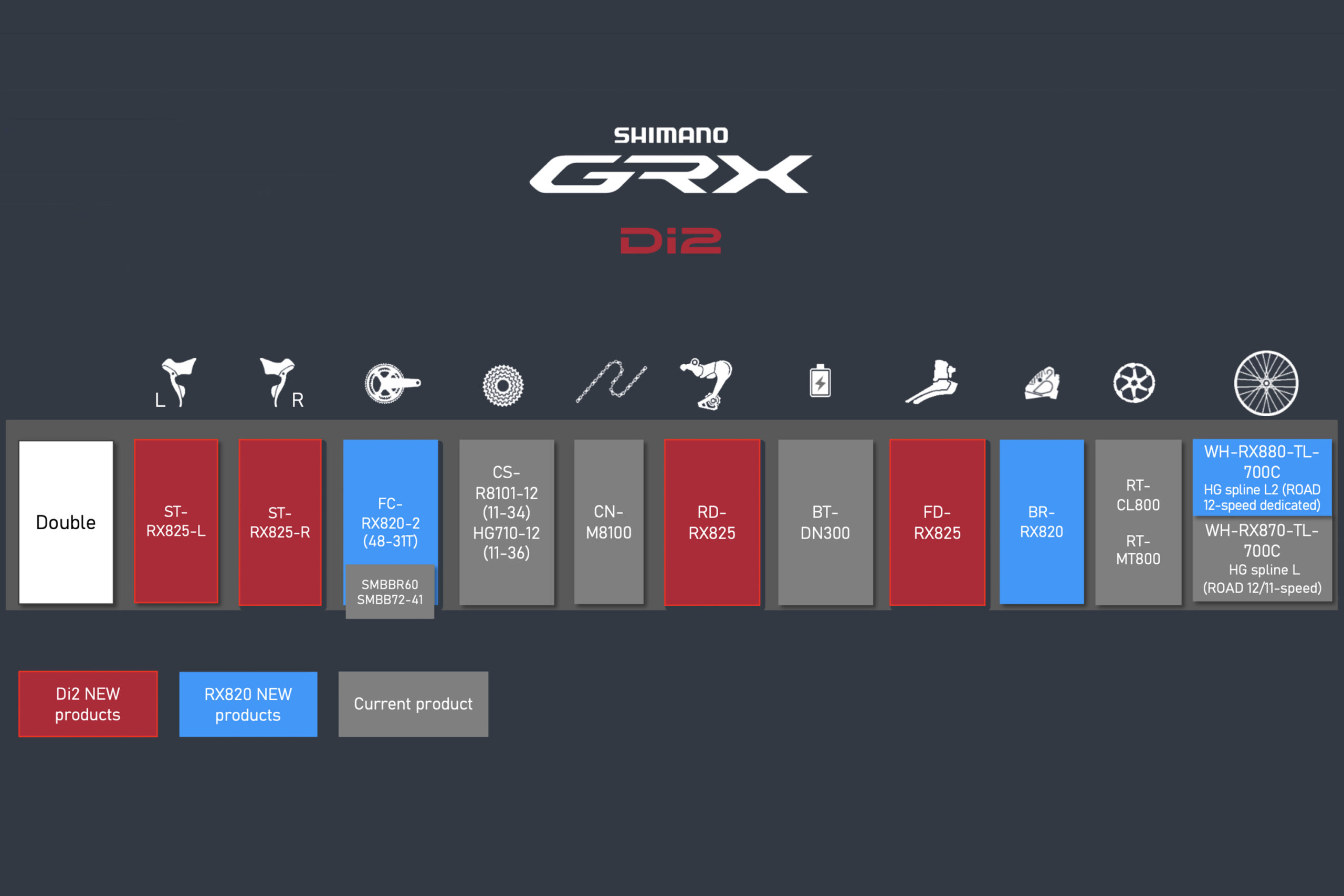
Do I see 2x suffering a similar fate in the gravel market as it did for mountain bikes? I don’t think so – or, at least, not in the very near future. Gravel riding encompasses too broad a range of usages, and a 2x setup with a more tightly spaced cassette just makes more sense for some riders and situations. That said, it’s utterly bonkers to me that Shimano is taking so long to release its 1x GRX Di2 groupset.
SRAM has been particularly good lately at coordinating with its OE partners so that bike brands have models available with all the newest parts right on launch day. SRAM has also gotten really good at highlighting just how many of those brands there usually are. With the latest SRAM Red AXS, for example, it was more than three dozen.
But when I asked Shimano representatives about complete bike’s we’d see with GRX Di2 groupsets at launch (i.e. today), the answer was Litespeed, Obed, Ventum, and Mosaic, and that’s it (and keep in mind Litespeed and Obed are under the same corporate umbrella).
"There are others, however the timing is not necessarily coordinated with our launch. When manufacturers begin offering bikes with this spec is up to them."
I’ve since confirmed that GRX Di2 RX825-equipped bikes will be offered by a handful of major brands, but it’s a tellingly lukewarm reception with nowhere near the rate of adoption that Shimano perhaps hoped there would be: literally just one or two models from some major brands, and none at all for others. Gravel is one of the most popular bike categories right now and Shimano is the undisputed leader in the componentry space, so to see its new flagship gravel groupset receive such minimal spec is nothing less than striking to me.
The forest for the trees
Incredible engineering is always good to see, but the sad fact is it doesn’t matter much if you’re designing something that not enough people are interested in using or buying. SRAM’s drivetrains may not feel as refined as what Shimano offers, but SRAM seems markedly better at listening to the market whereas Shimano historically has been more apt to tell the market what it thinks it should want (see Dual Control mountain bike levers and Rapid Rise rear derailleurs).
To be clear, it is absolutely without question that GRX Di2 1x is coming. But because it’s by nature somewhat of a hybrid offering that also incorporates some mountain bike components, anything new on Shimano’s 1x gravel front also requires coordination across multiple departments and development teams. And since Shimano has been dragging its feet on new Di2 mountain bike drivetrains, GRX Di2 1x has apparently been frustratingly pushed back as well.
Also to be clear, the GRX Di2 2x groupset Shimano has just released seems to work incredibly well from what I can tell so far. But I suspect for a larger portion of the gravel market, all it’ll do is create further frustration that what they really want still isn’t here yet.
Get the lead out, Shimano. As the saying goes, don't let perfect be the enemy of the good here. Give the people what they want.
More information can be found at bike.shimano.com.
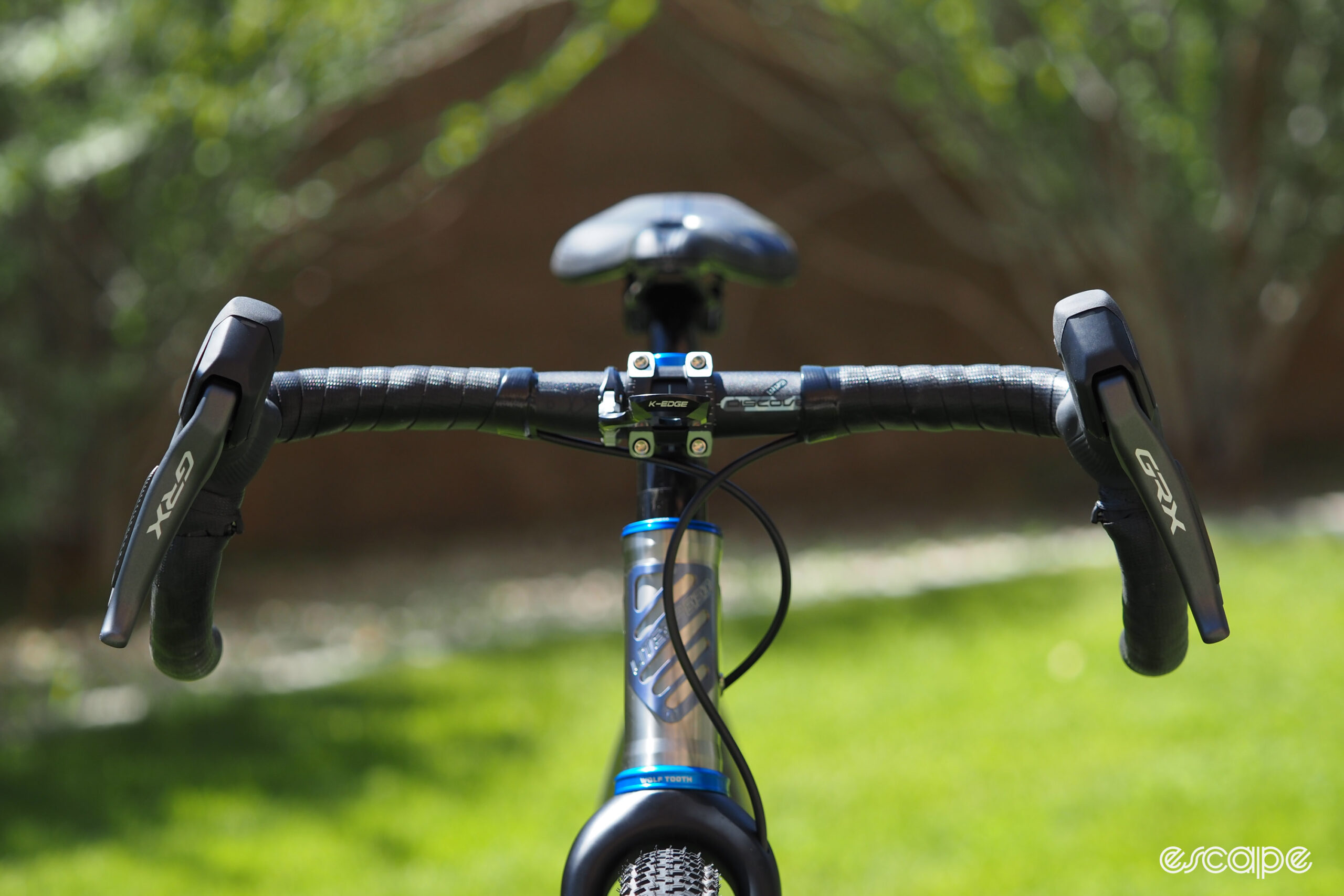
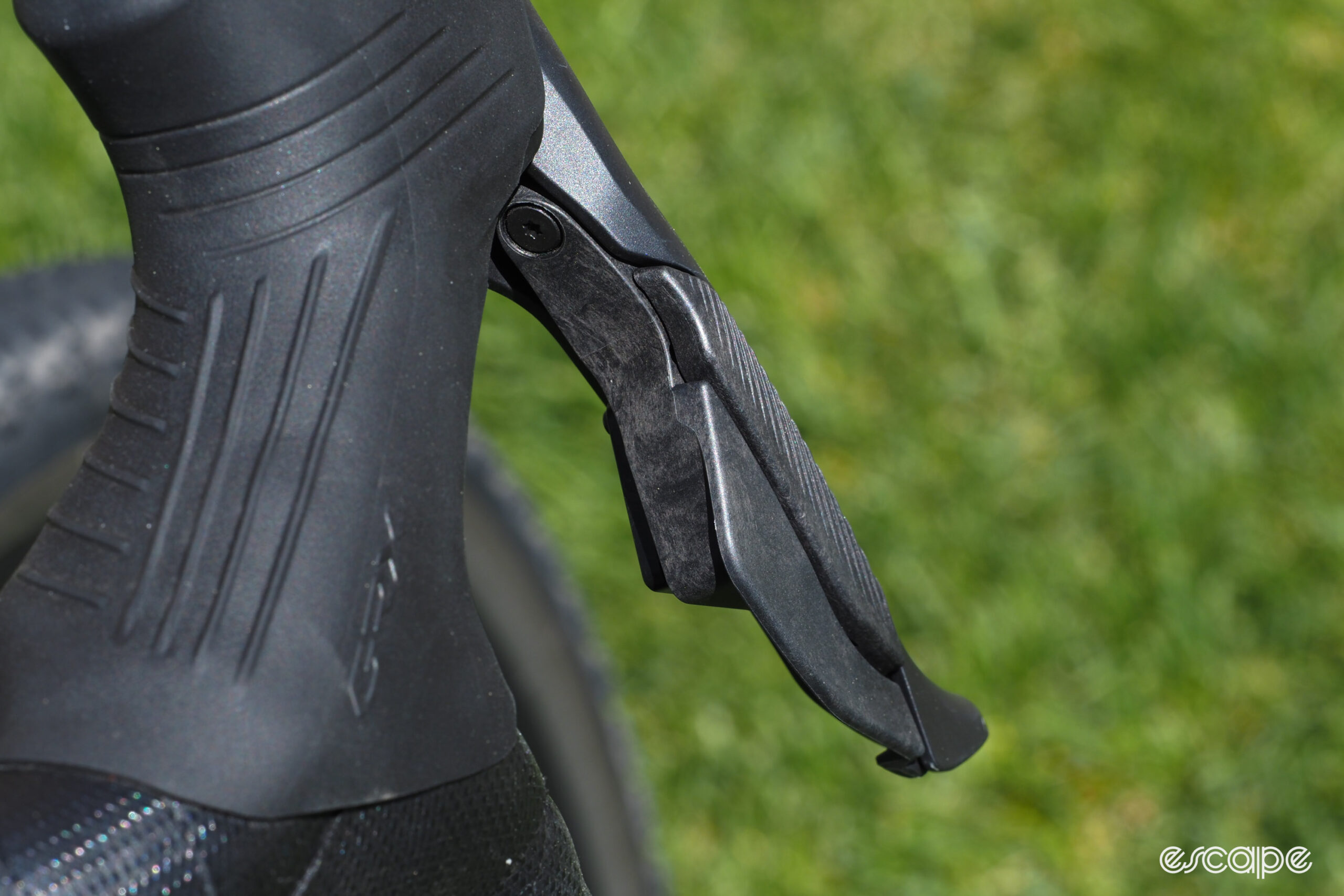
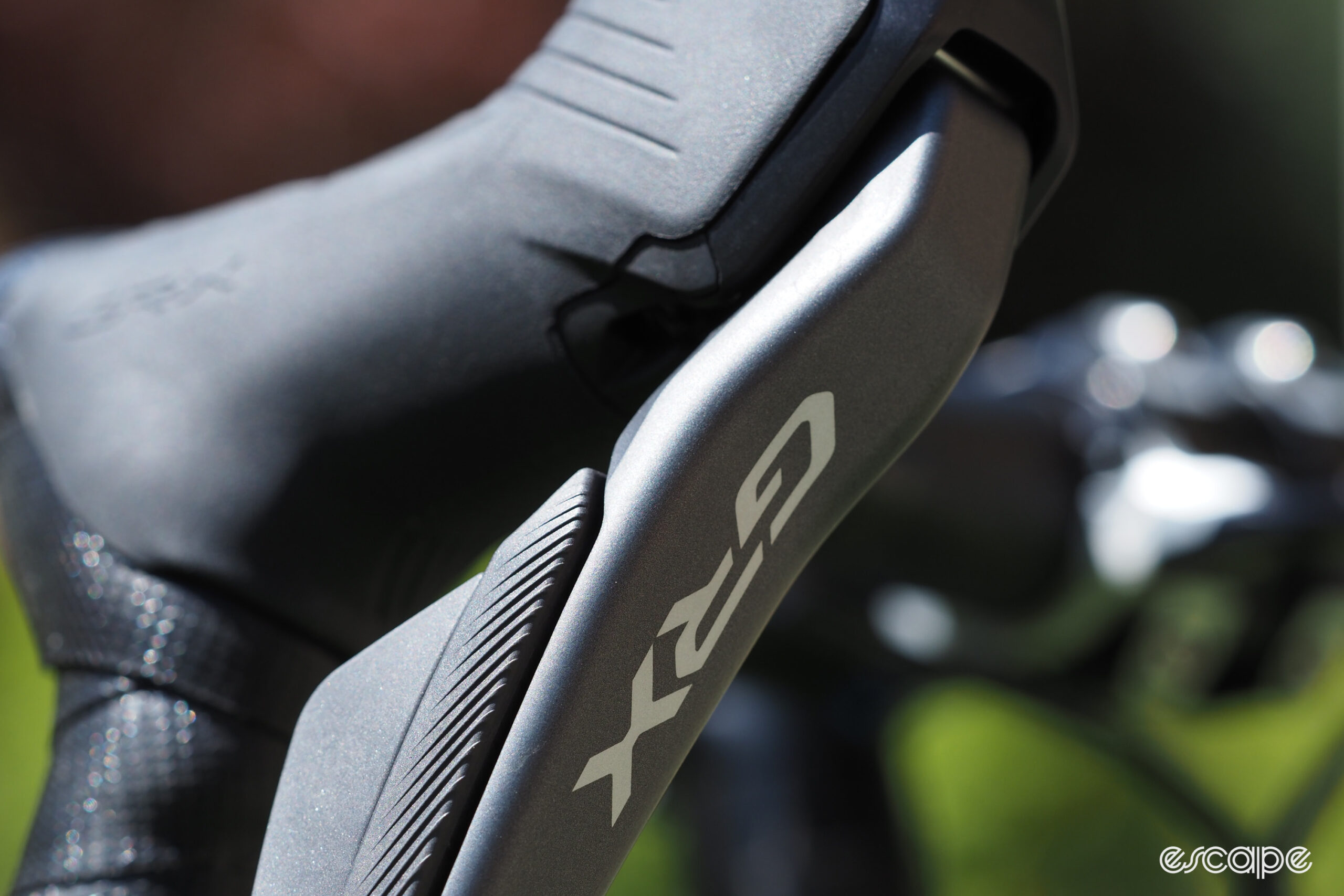
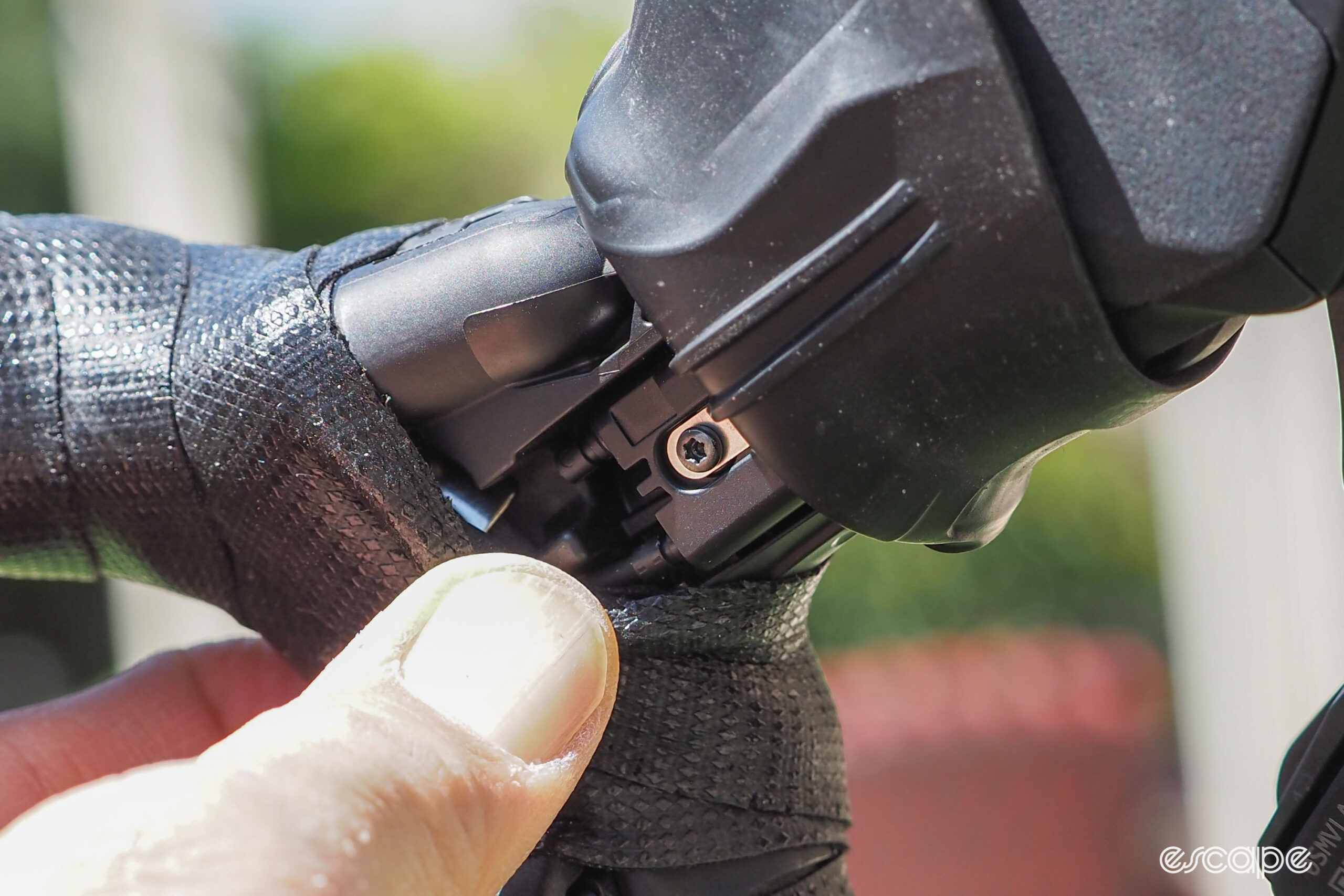
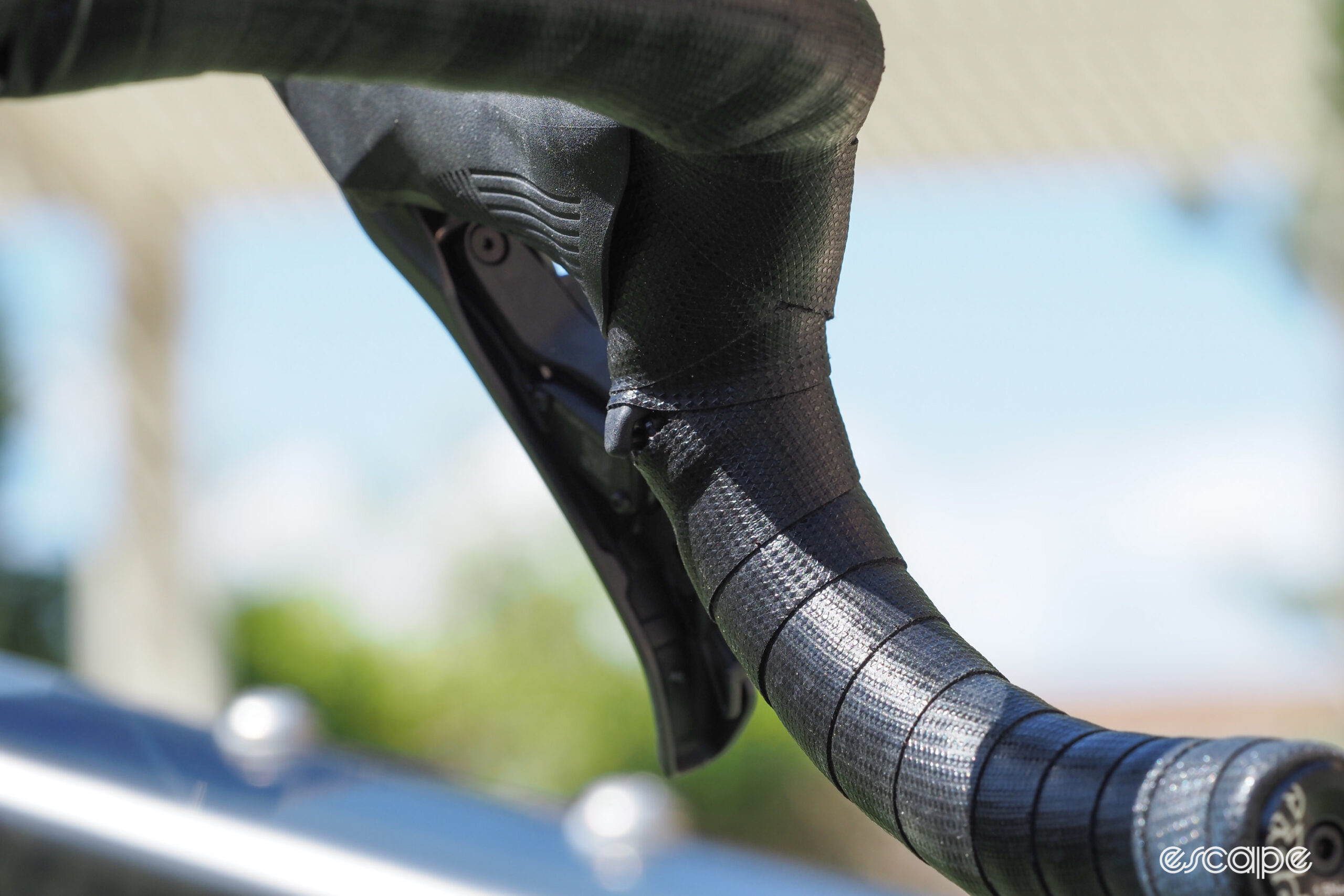
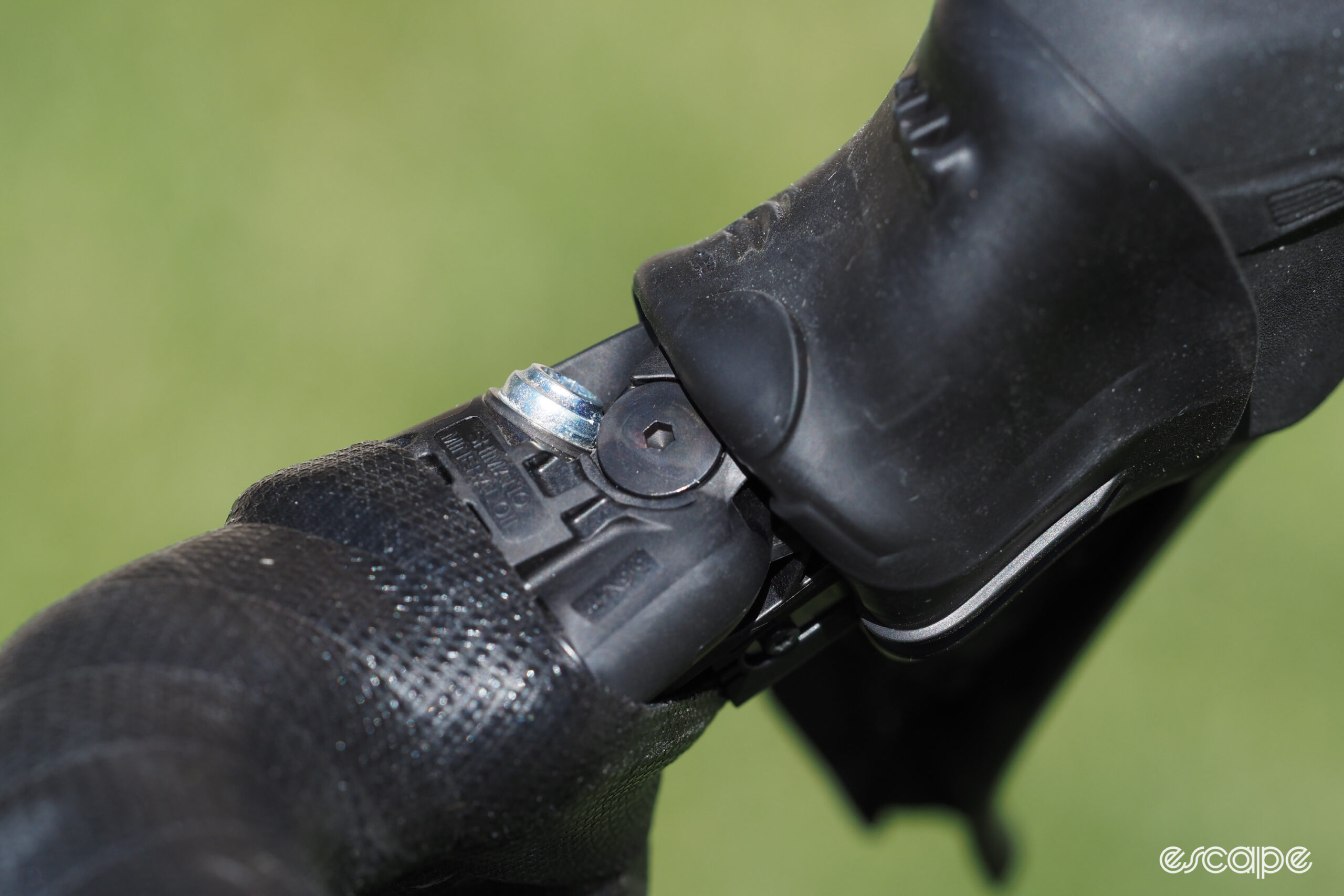
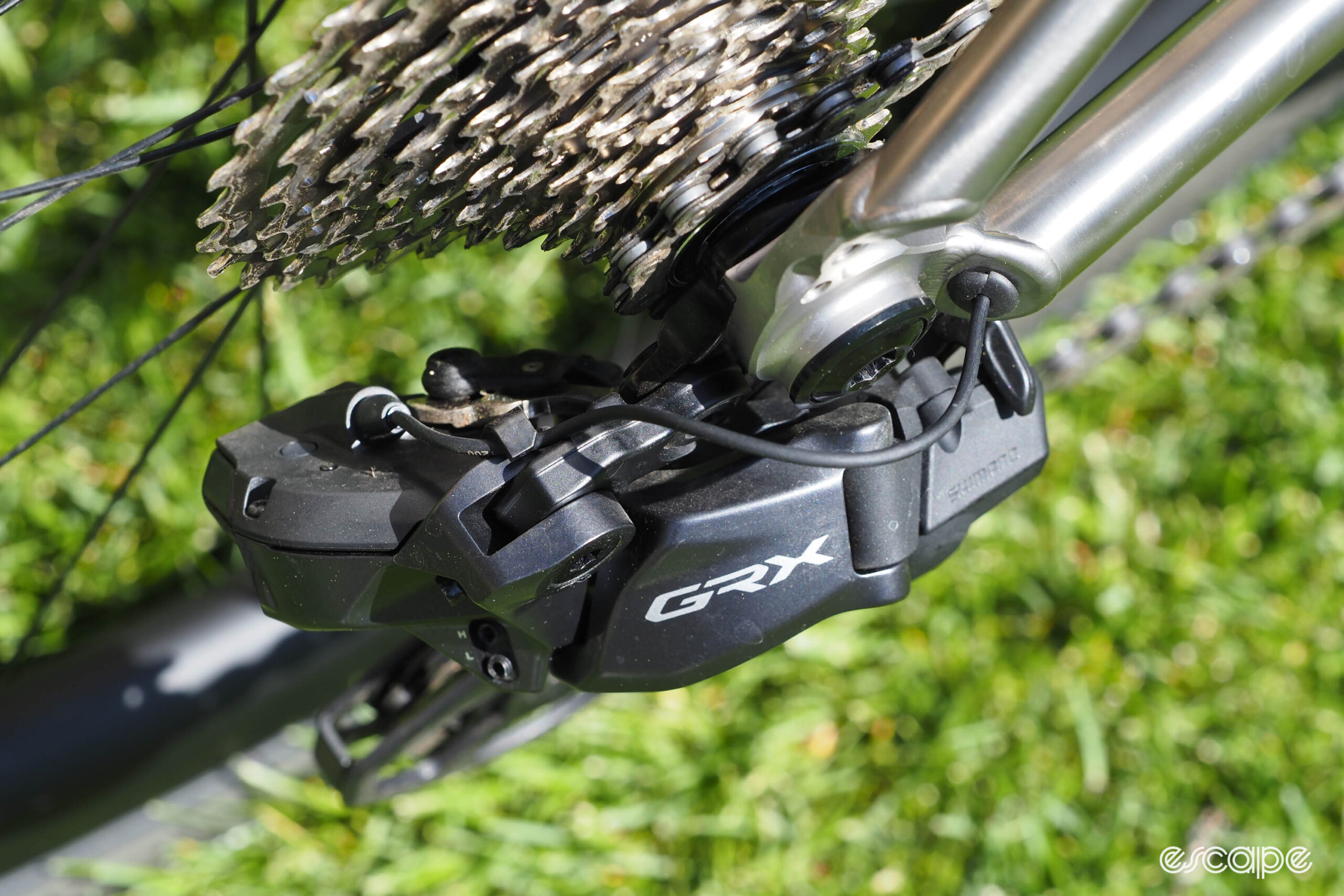

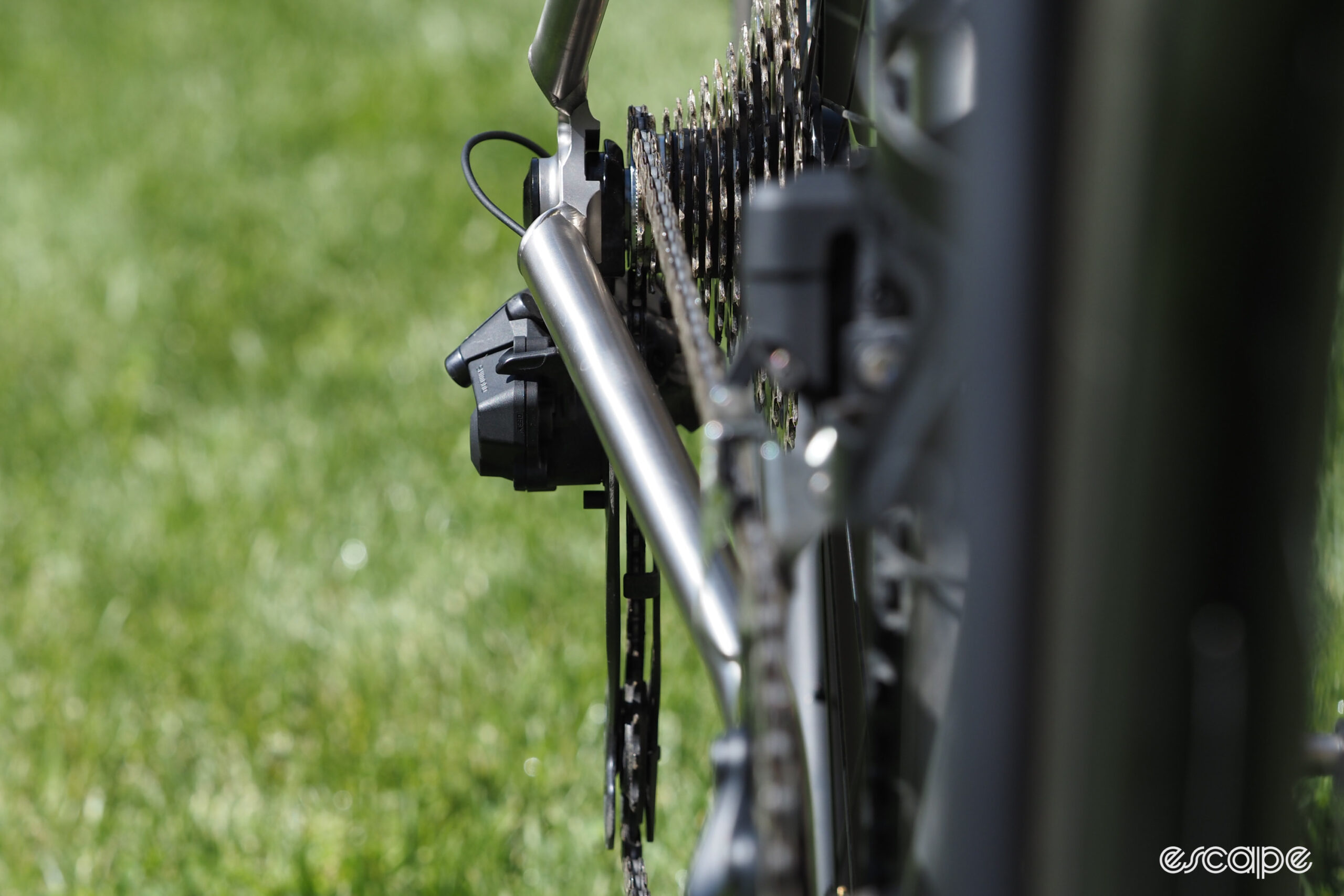
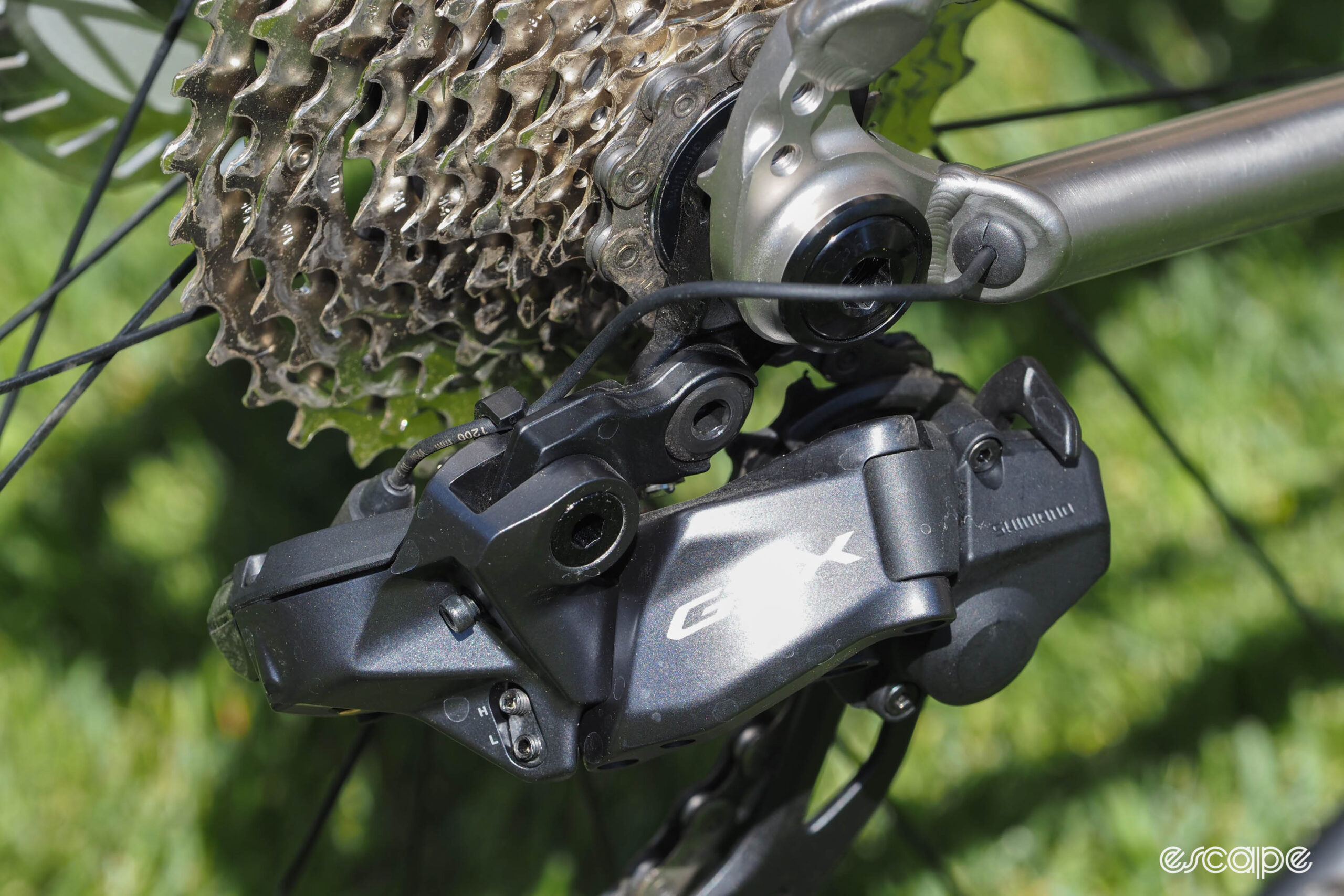

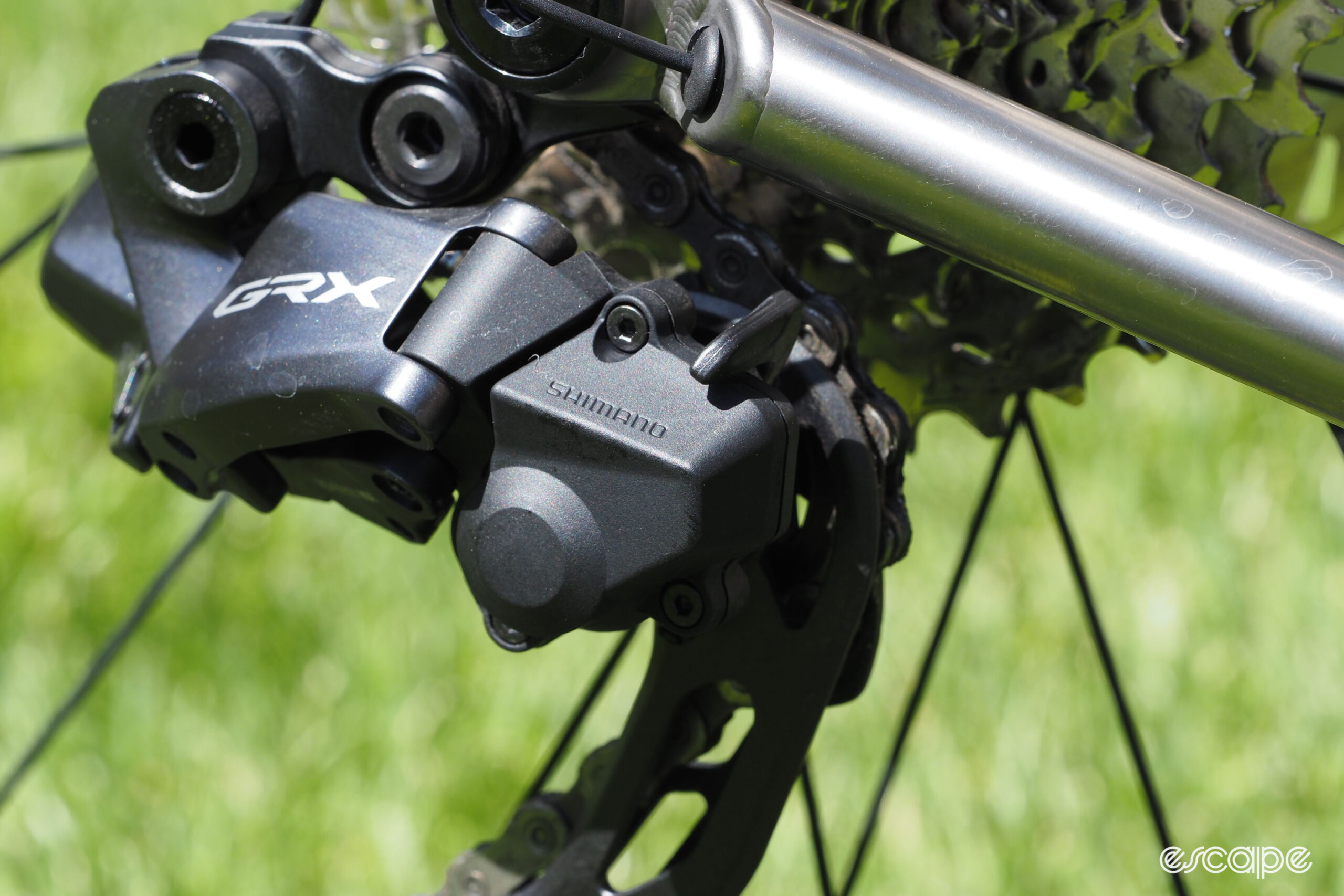
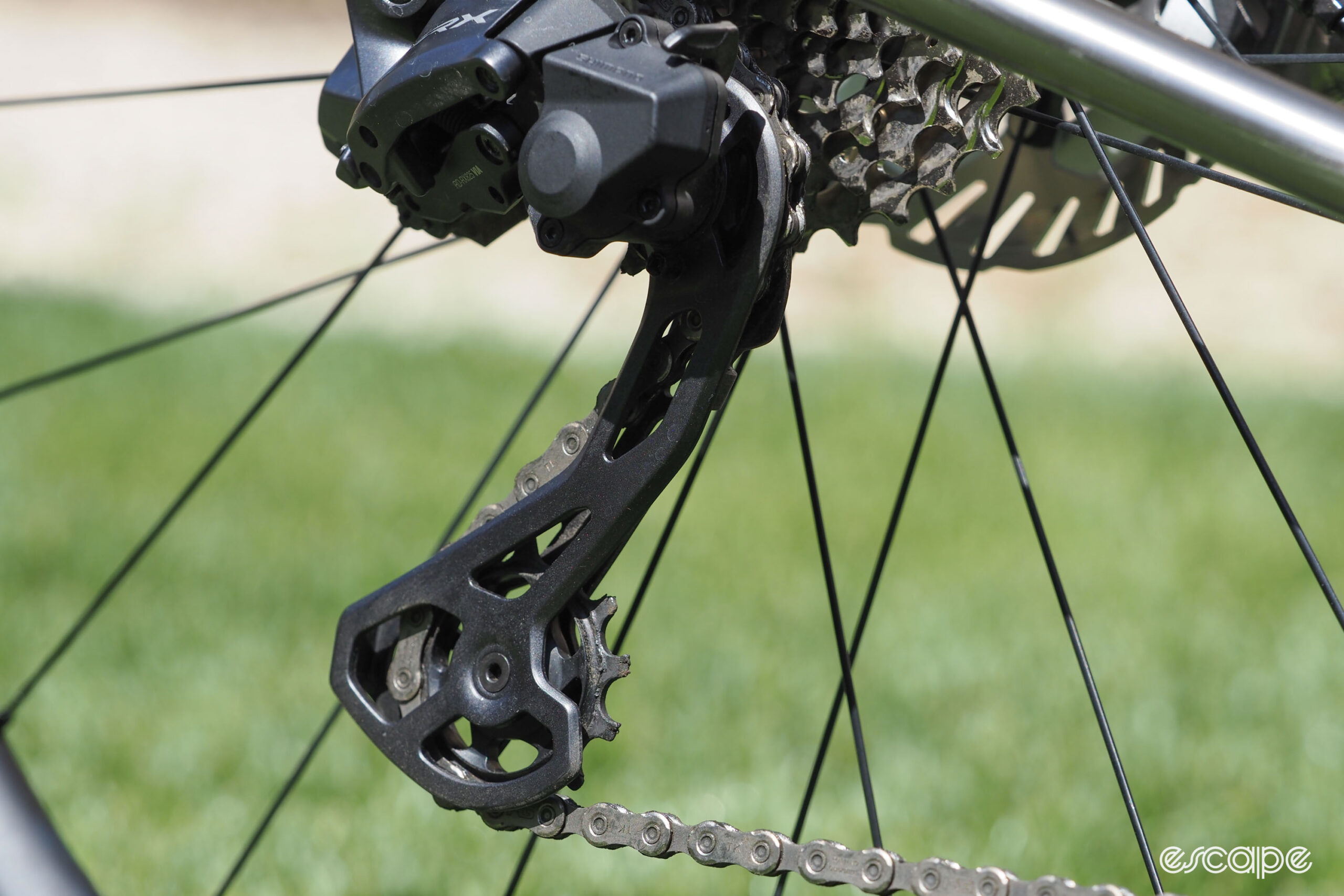
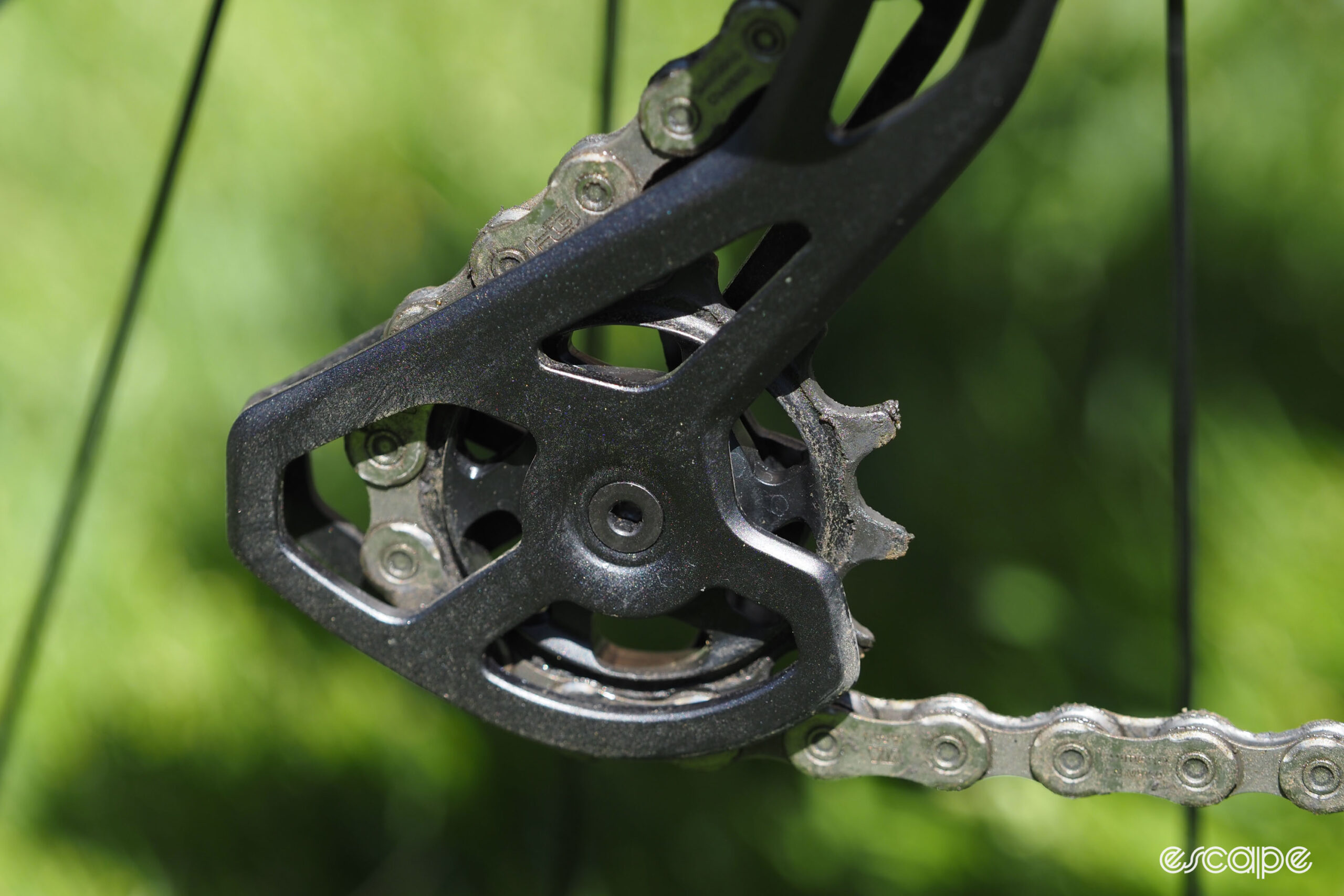

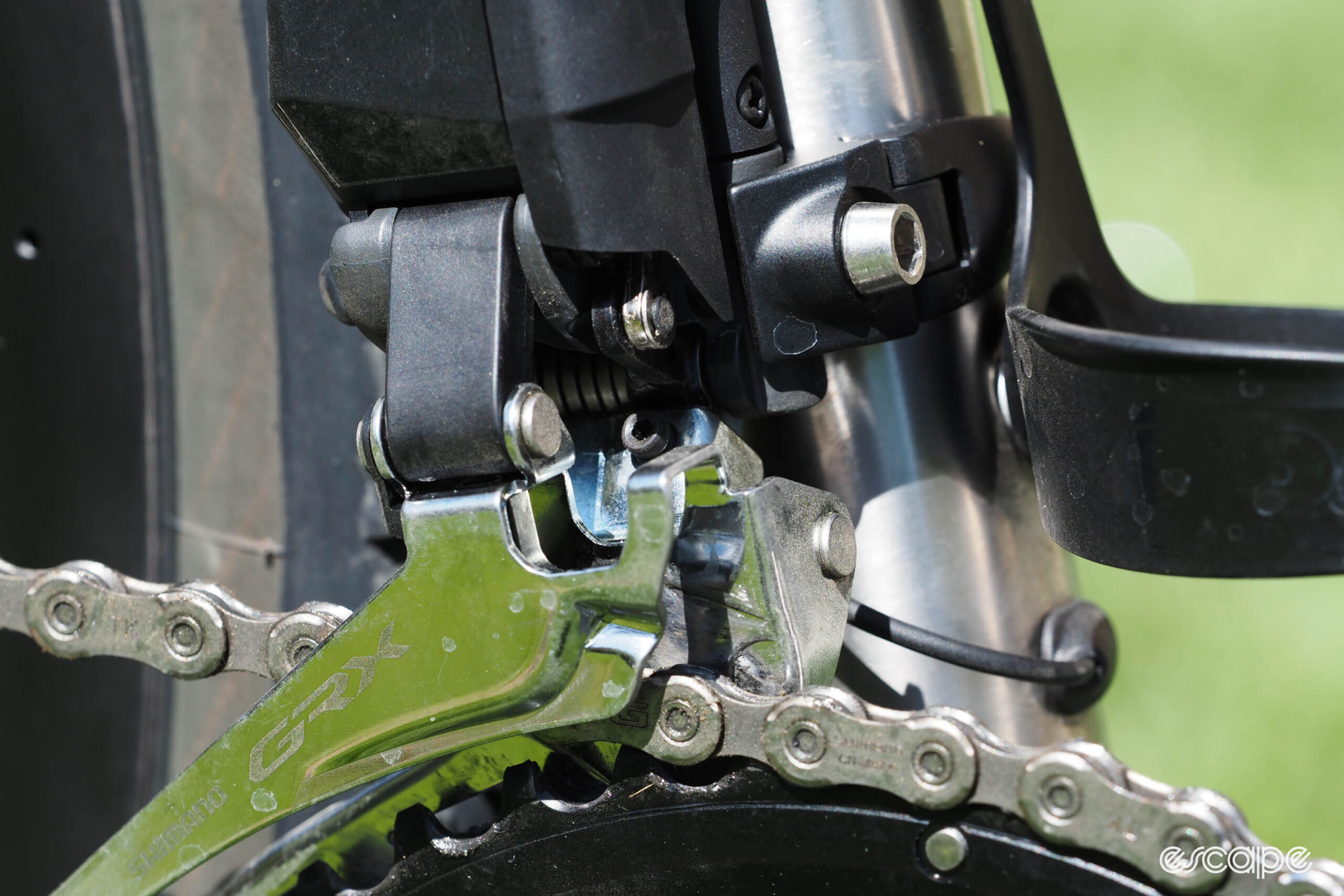

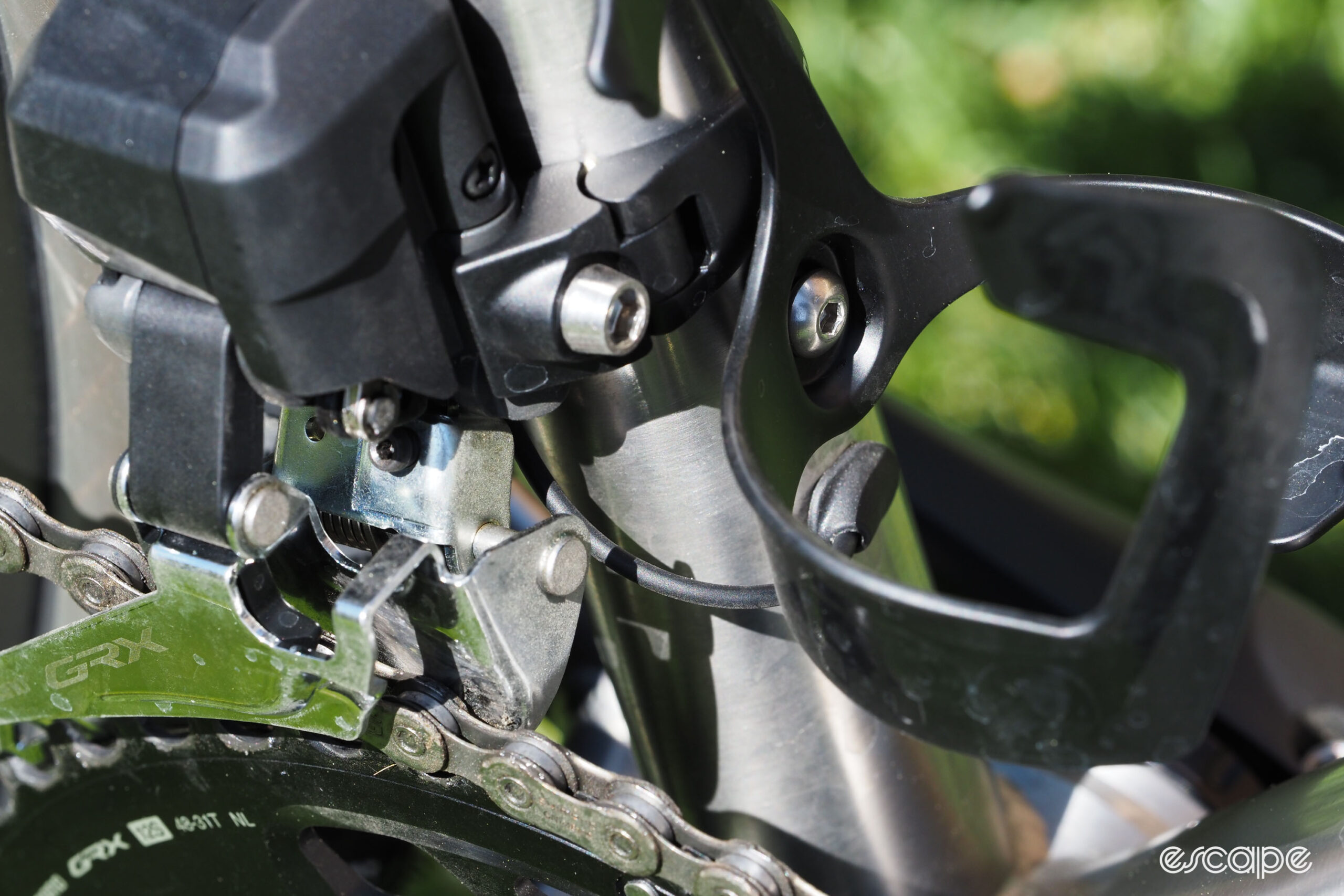

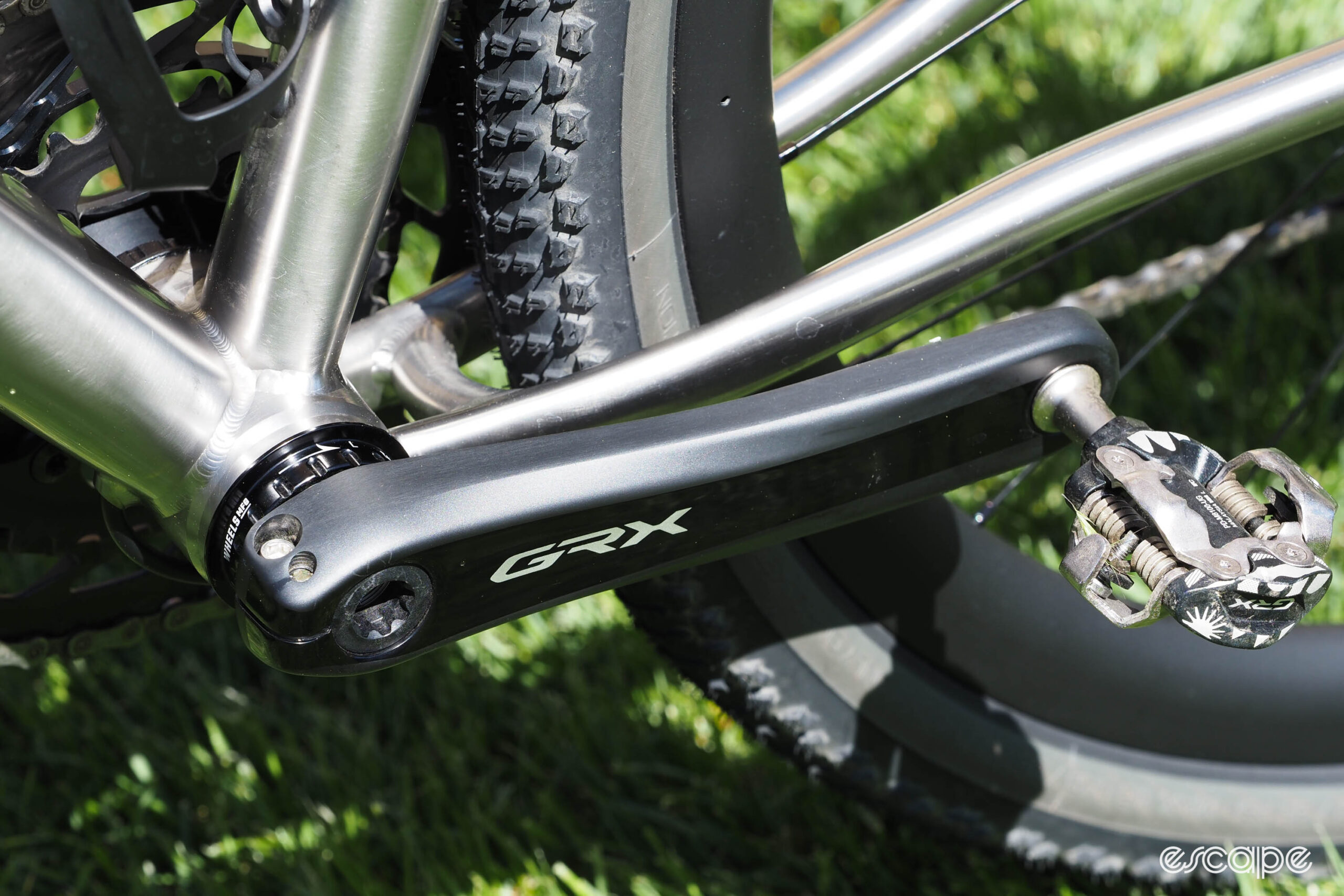
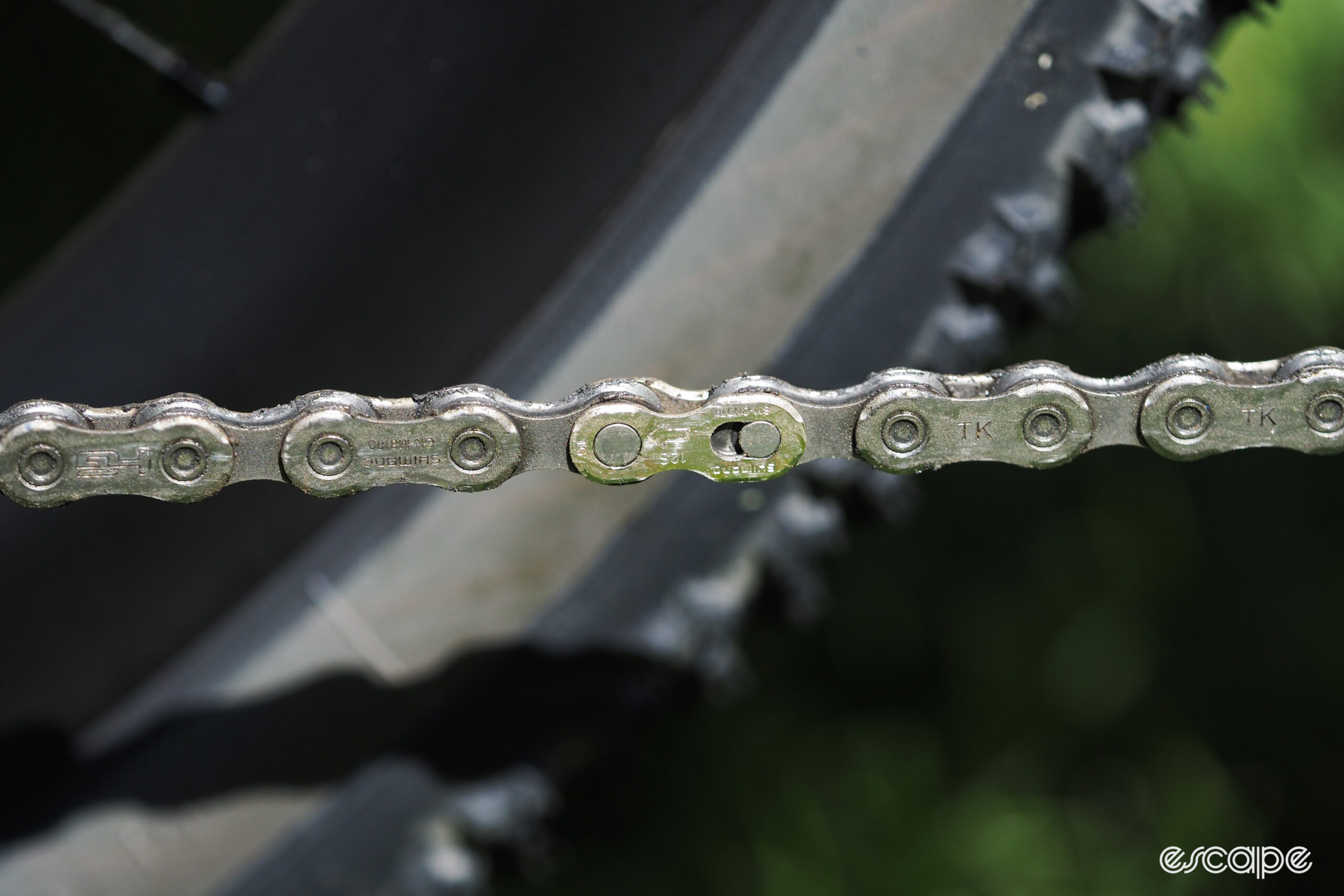
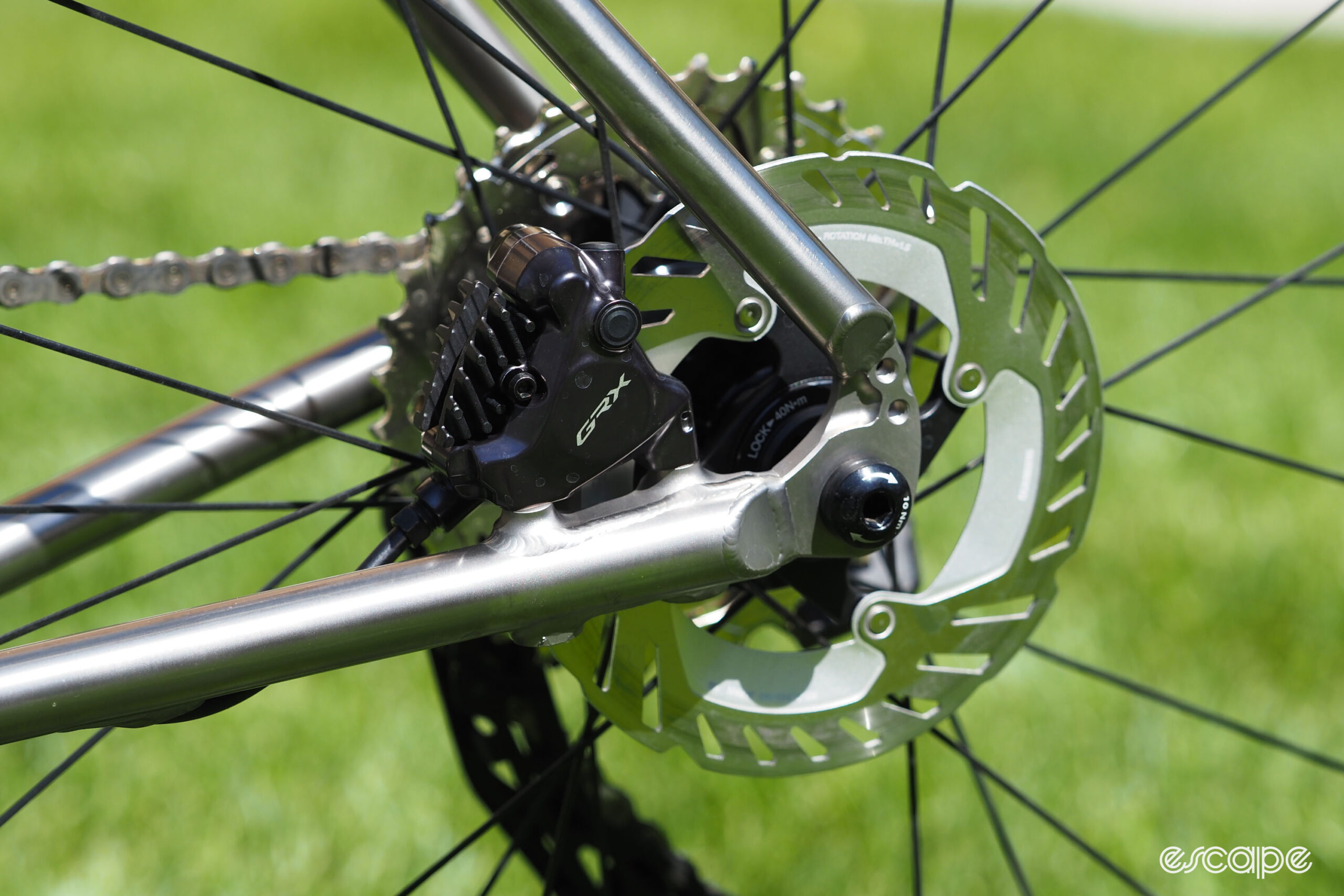
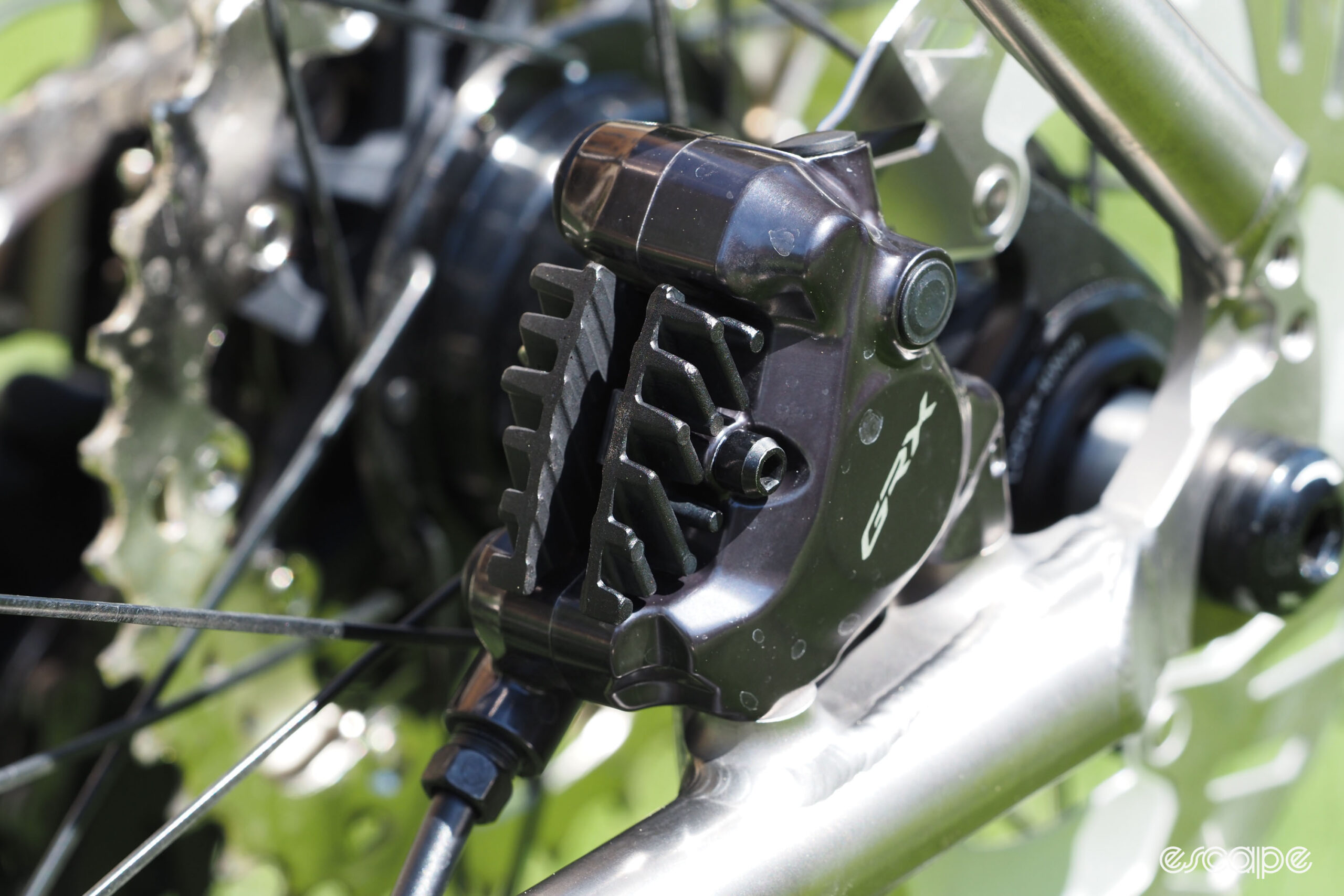
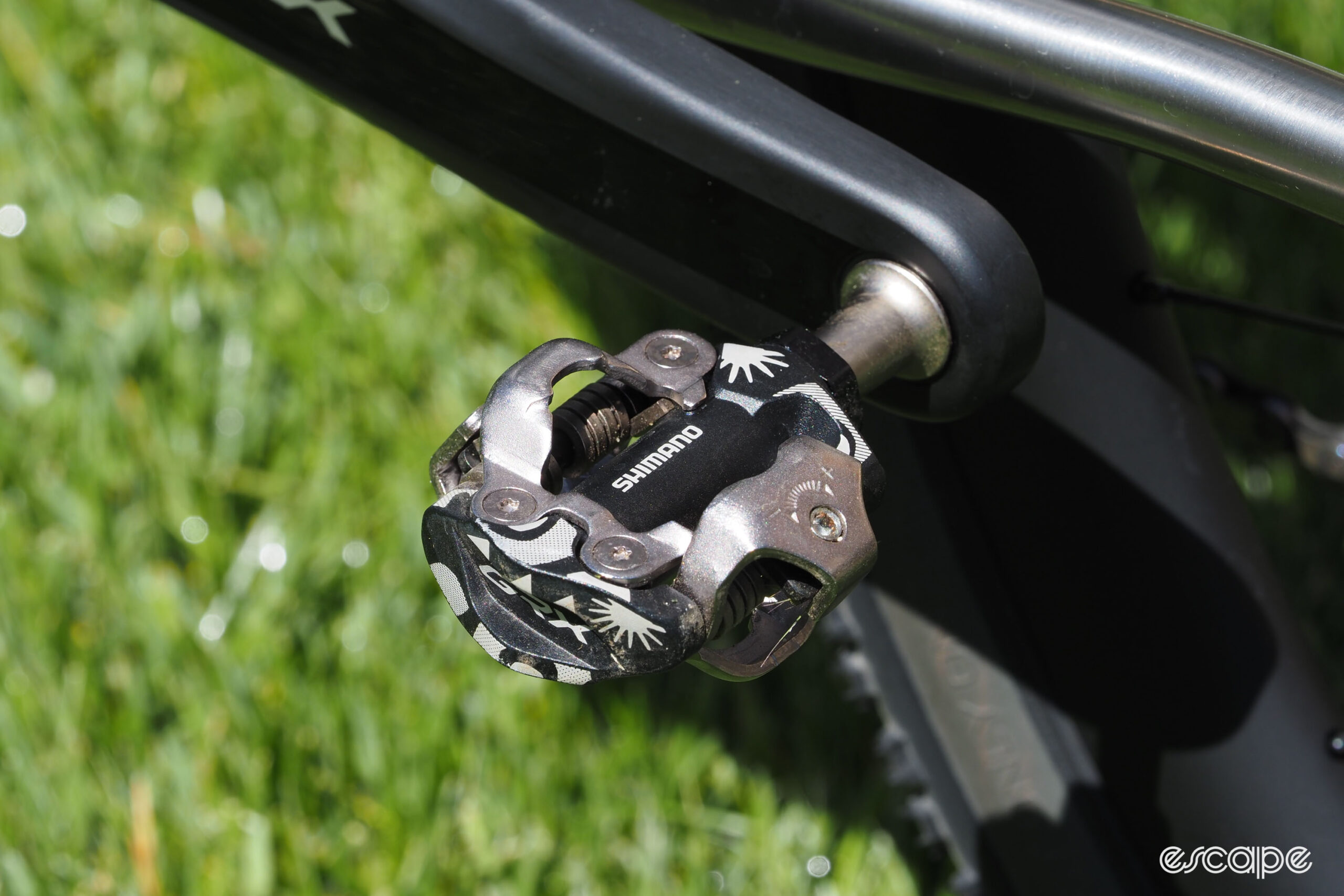

Did we do a good job with this story?

